Voyager
Vulcan
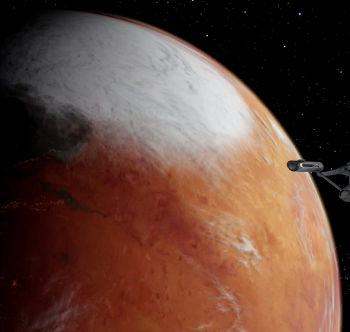
Vulcan (TOS-34)
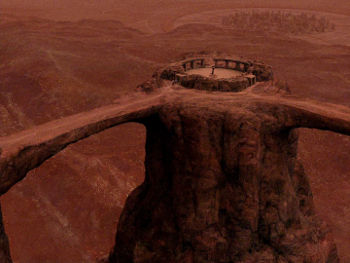
Vulcan surface (TOS-34)
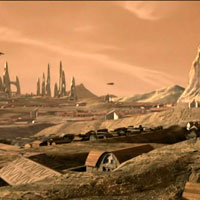
Vulcan surface (ENT-79)
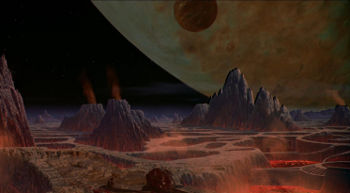
Vulcan Surface (ST-01)

Vulcan Surface (ST-01)
Vulcan, a Class-M world,[2, 4] was the second planet in the 40 Eridani trinary system, orbiting 40 Eridani A.[4] Although Vulcan had no moon,[1] the planet shared an orbit with its sister world, T’Khut.[3]
› Continue reading
Utopia Planitia Fleet Yards
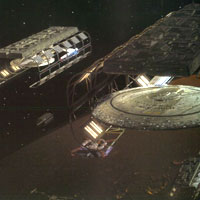
Utopia Planitia Ship Yards (VOY-218)
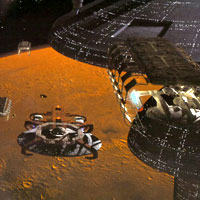
Utopia Planitia Ship Yards (VOY-218)
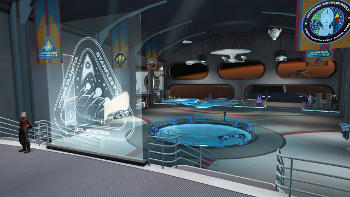
Utopia Planitia Ship Yards interior (STO)
Shipbuilding facility orbiting the planet Mars,[2] with offices on the surface in the Utopia Planitia region.[1]
› Continue reading
Sol System
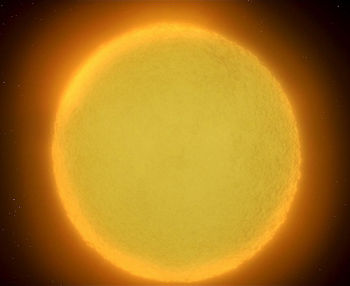
Sol (ST-04)
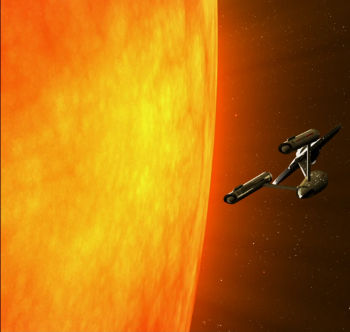
Sol (TOS-21)
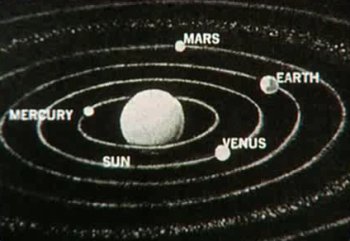
Sol System (TOS-00)
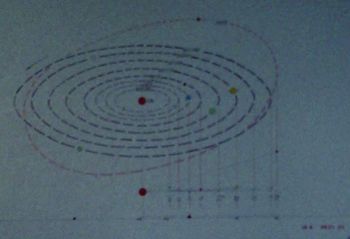
Sol System (TOS-37)
Star system located in Sector 001, in the Alpha Quadrant. The parent star, Sol, was Type-G and was orbited by eight planets (though Pluto frequently switched between being considered a planet and a planetoid),[2] including Earth, and was commonly known as the Sun. The Talosians viewed an image of the Sol System and many images of Earth’s history while accessing the U.S.S. Enterprise NCC-1701‘s computer in 2254.[1]
Planets
References
- 1. “The Cage.” Star Trek, Episode 0. Television. 1965 (Unaired).
- 2. “Before Dishonor.” Star Trek: The Next Generation. Novel (Unnumbered). November 2007.
San Francisco

San Francisco (ST-06)

San Francisco (VOY-122)

San Francisco (ENT-01-02)

San Francisco (ENT-01-02)

Starfleet Communications (VOY-230)

San Francisco, 1893 (TNG-226)

San Francisco, 1893 (TNG-227)
Located in California on Earth. Many key Starfleet facilities were located within the city, including Starfleet Academy[3] and Starfleet Command,[2], as well as the offices of the San Francisco Fleet Yards.[1] Jonathan Archer was raised in San Francisco.[6]
Lieutenant Commander Data was transported from Devidia II in 2368 to San Francisco in 1893 while pursuing a group of Devidians who were traveling through time.[4] Cholera had broken out in the city at this time, and the Devidians were using it as to cover up the fact that they were harvesting Human neural energy as a food source. Guinan and Samuel “Mark Twain” Clemens lived in San Francisco in 1893, and they encountered Data and Jean-Luc Picard, who had followed Data back in time.[5]
References
Pluto
A Class-C planetoid,[1] Pluto alternated between being considered a planet and a planetoid ever since its discovery in the mid-20th century:[5] in 1996, Pluto was depicted as the ninth planet in the Sol System on a poster in Rain Robinson‘s office at Griffith Observatory;[3] in 2367, the U.S.S. Enterprise NCC-1701‘s computers showed a map to Nomad, depicting Pluto as the ninth planet in the system.[1] In 2292, the maiden voyage of the U.S.S. Enterprise NCC-1701-B was planned as “a quick run around the block,” taking the ship from Earth, out past Pluto, then back to the inner system; a distress call from the S.S. Lakul, however, necessitated a change of plans.[2] Pluto had a diameter of 2300 kilometers, a surface temperature of -236°C, a rotation of 6390 days, and gravity of 0.07 g. Located 5.9 billion kilometers from Sol, it took 248.5 Earth years to complete one orbit. Pluto had one moon, Charon, which was nearly as large as Pluto itself.[4] In the EU timeline, Pluto was destroyed during a Borg invasion of the Sol System in 2381.[5]
References
Nebula, Dark Matter (VOY-113)
An otherwise unnamed Delta Quadrant nebula, home of the Komar energy beings who fed off the neural energy of unwitting and unfortunate passers-by. Its strong EM emissions make it an ideal hiding spot. Neelix once lost a warp nacelle due to bow wave pressure while piloting a ship through another dark matter nebula.[1]
References
Nebula, Class 17 (VOY-145)
A blue nebula in the same sector as Porakas, source of a viral parasite that sent Tuvok‘s memory back to the U.S.S. Excelsior NCC-2000. With standard hydrogen and helium amounts, it scanned 7,000 parts-per-million of sirillium and had high plasmatic turbulence.[1]
References
Mars
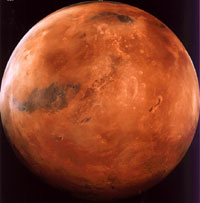
Mars (STSC)
Mars was the fourth planet in the Sol System. The Talosians viewed an image of the Sol System while accessing the U.S.S. Enterprise NCC-1701‘s computer in 2254.[1] Mars was colonized by Humans in 2103.[3] By 2155, terraforming efforts had brought the planet’s original Class-K atmosphere[6] to the verge of breathability.[4] By the 24th century, Mars had become a Class-M planet.[5] Mars had a diameter of 6790 kilometers and took 24 hours 37 minutes to complete one rotation; gravity was 0.38 g. Mars was located 227,940,000 kilometers from Sol and took 686.9 days to complete one revolution around the star. Mars had two asteroidal moons, Phobos and Deimos.[6] Orbital facilities included the Utopia Planitia Fleet Yards.[2]
References
Luna
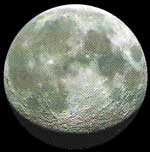
Luna (STSC)
Luna, commonly known simply as “the Moon,” was a Class-D world orbiting Earth.[4] By the late 24th century, more than 50 million people lived on the Moon.[3] The Talosians viewed several images about Earth’s Moon and programs to study and explore it while accessing the U.S.S. Enterprise NCC-1701‘s computer in 2254.[1] The Copernicus Ship Yards were located in orbit, with office facilities on the surface; the U.S.S. Hathaway NCC-2593 was built there.[2] Other points of interest on the Moon included Tranquility Base, where Apollo 11 landed in July 1969; as well as Lake Armstrong and New Berlin.[3] See also: Apollo program, Armstrong, Neil, Kennedy, John F., Lunar probe, Ranger probe.
References
Los Angeles
City in southern California on Earth. In the late twentieth century, the Chronowerx corporation had its headquarters located there. After the Hermosa Quake of 2047, Los Angeles and much of the surrounding area was underwater, where it became home to one of the largest coral reefs on the planet.[1]
References
Categories
- Animated Series (60)
- Articles (28)
- Books (447)
- Cast & Crew (79)
- Comics (22)
- DS9 (328)
- Early Voyages (125)
- Education (5)
- Enterprise (373)
- Excelsior (36)
- Food (19)
- Games (223)
- Klingon (70)
- Library (1,543)
- Logs (593)
- Lost Era (55)
- Medicine (18)
- Merrimac (1)
- Mirror (35)
- Miscellaneous (13)
- New Frontier (54)
- Next Generation (635)
- Original Series (681)
- Personnel (436)
- Places (369)
- Politics (12)
- Recreation (10)
- SCE (41)
- Science (1)
- Shatnerverse (9)
- Ships (455)
- Site Updates (98)
- Starfleet Academy (86)
- Stargazer (42)
- STO (61)
- Technology (45)
- Titan (59)
- To Boldly Go (1)
- TV/Film (214)
- Uncategorized (4)
- Vanguard (76)
- Voyager (236)
- Weapons (27)
- Xenology (54)